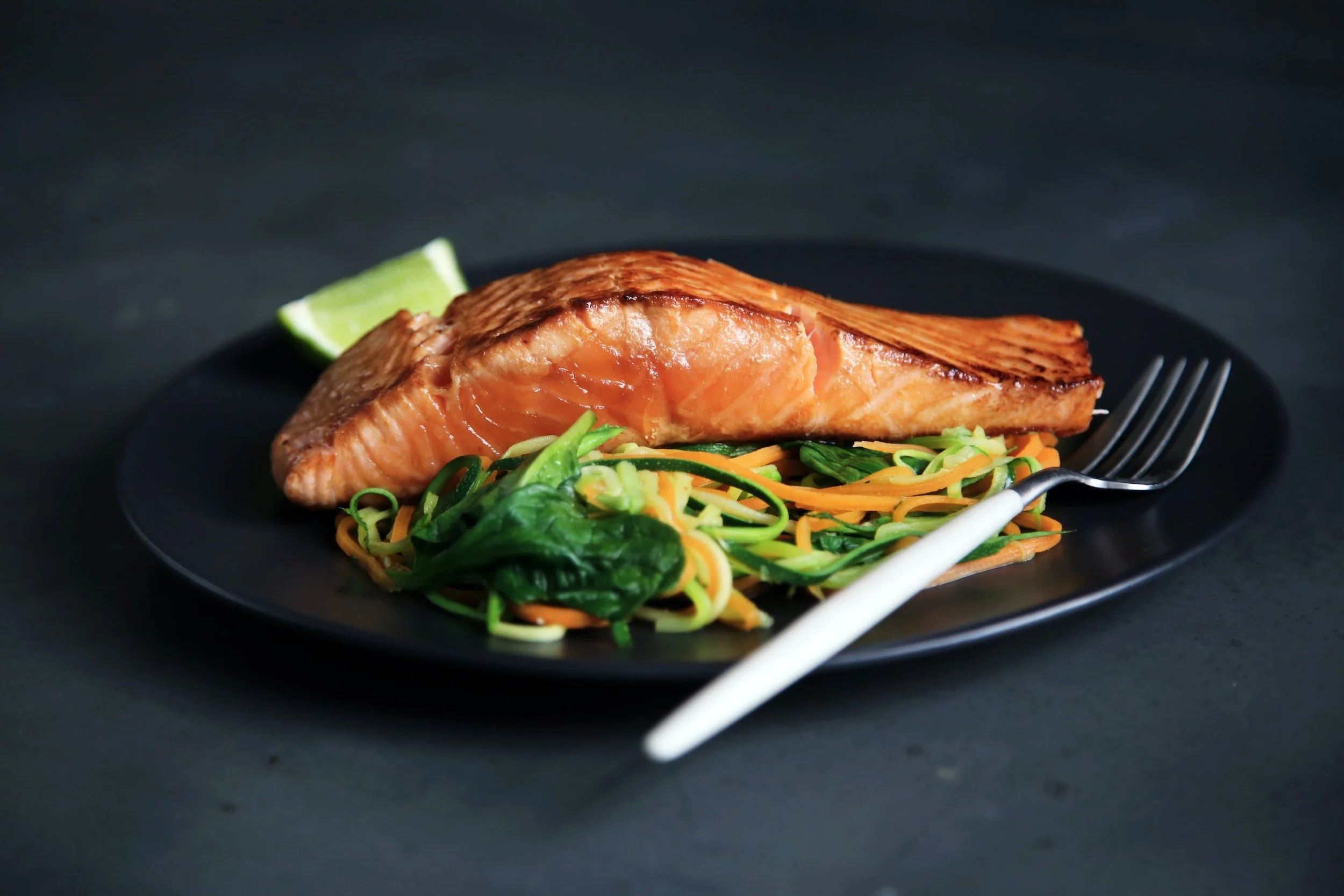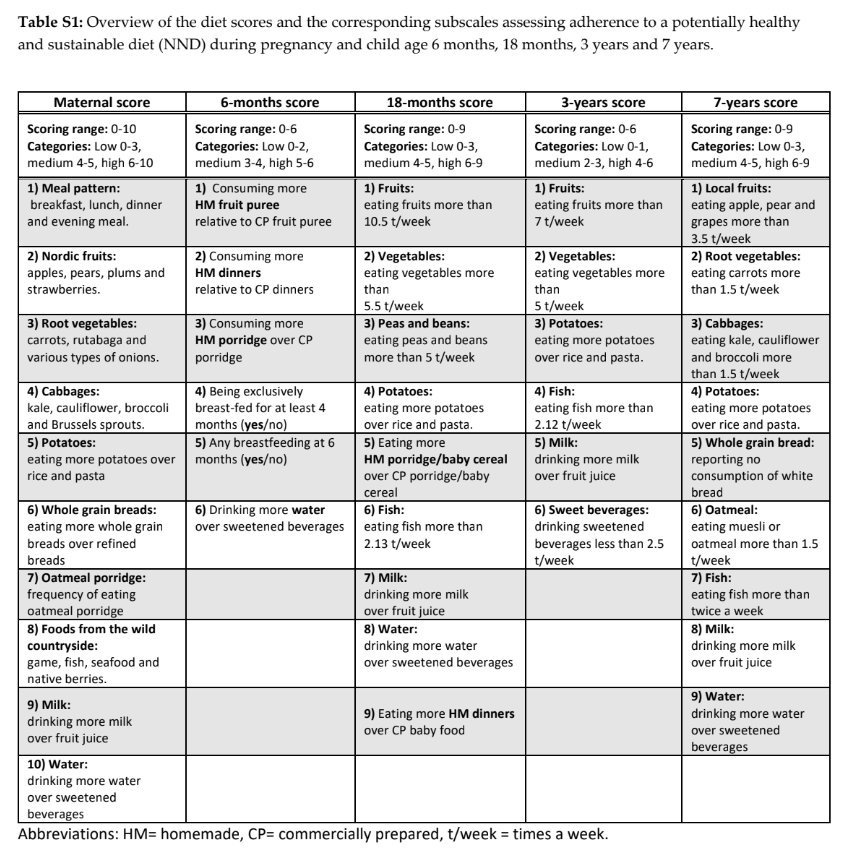The New Nordic Diet: The Best Diet For Kids’ Mental Health?
Recently, I ran across a study claiming to improve a kid's mental health and personality. I was intrigued but skeptical, thinking it sounds very clickbait-y. Skimming the study turned into really analyzing it and the more I read the more it seemed to hold water. Instead of just adding it to the monthly update I decided it was important enough to warrant an article.
The title says it all: Diet in Early Life Is Related to Child Mental Health and Personality at 8 Years: Findings from the Norwegian Mother, Father and Child Cohort Study (MoBa). It’s a cohort study with a vast sample size (40,000+ pregnancies) that looked at nutrition on mental health and personality over an 8-year period with promising results.
According to this study, eating the New Nordic Diet leads to better mental health for children.
I’m hooked. But what is the New Nordic Diet?
The New Nordic Diet Results: Improved Mental Health
Before we dive into the diet, let’s take a look at the study and the claims. Researchers recruited over 40,000 pregnant Norwegian women in the time between 1999-2008. They used a variety of measurements including a questionnaire, two anxiety and depression screening tools, a personality inventory, and of course the New Nordic Diet (NND) score. They crunched the data and out poured some impressive results.
Results for kids whose mom's adhered to the New Nordic Diet during pregnancy:
Lower depression at 8 years old (no association with anxiety)
Less internalizing and externalizing behavior at 5 years old
Decrease in ADHD symptoms at 8 years old and lower risk of ADHD
Better spatial skills (early childhood), verbal intelligence and executive function (mid childhood)
Better neurodevelopment in "families living in suboptimal environments"
Results for child's diet at 6 months, 18 months, and 3 and 7 years old
Stronger link to anxiety and depression with diet at 3 and 7 years old vs. earlier ages.
Less healthy foods in early childhood linked to "higher levels of both internalizing and externalizing problems at five years"
Study Conclusions
"In total, these findings combined underpin a probable impact of both maternal pregnancy diet and early childhood diet on several aspects of child mental health."
The results of this study are incredible. By having a pregnant mom eat a relatively simple and straightforward diet, and then passing on those food choices and ways of eating to their child for the next 8 years, that child has less depression, ADHD, and behavioral concerns, and has improved spatial skills, verbal intelligence, and executive functioning abilities. The common theme of all of these improvements is the brain. The New Nordic Diet has a direct impact on brain health and, thus, mental health.
While there is plenty of speculation about the role that food plays in children’s mental health, this study not only provides objective results but it does so with a clear plan to improve mental health.
The plan, that is, the New Nordic Diet, is not a complex or extremely restrictive diet. What makes it difficult to adhere to, like most things in life, is convenience and time. It minimizes processed foods (which tend to be stripped of nutrients and loaded with additives, sugar, and chemicals) and focuses on foods local to Norway.
Before we jump into the practical ways to implement this diet, let’s examine the New Nordic Diet.
What is the New Nordic Diet?
The New Nordic Diet (NND) is a dietary concept developed in 2004 by a group of Danish chefs and nutritionists, with the aim of promoting health and sustainability through a diet based on foods that are traditionally eaten in the Nordic countries (Denmark, Sweden, Norway, Finland, and Iceland).
The diet is characterized by a high intake of whole grains, fruits, vegetables, berries, fish, seafood, and low-fat dairy products, and a lower consumption of meat and processed foods. The NND also emphasizes the use of local and seasonal foods, and the integration of traditional Nordic foods and cooking techniques.
The NND has been associated with a number of health benefits, including improved cardiovascular health, lower risk of chronic diseases such as diabetes and obesity, and better cognitive function. Additionally, the NND has been found to have a lower environmental impact than many other dietary patterns, due to its focus on local, seasonal, and sustainably produced foods. No wonder the countries in this region of the world are the happiest.
The Mediterranean Diet vs. The New Nordic Diet
The New Nordic Diet and the Mediterranean Diet have some similarities in that they both emphasize whole, minimally processed foods and a high intake of fruits, vegetables, whole grains, and seafood. However, there are also some key differences between the two:
Emphasis on different types of fats: The Mediterranean Diet is known for its high intake of monounsaturated fats, particularly from olive oil, while the New Nordic Diet focuses more on polyunsaturated fats, such as those found in canola oil, nuts, and seeds.
Different protein sources: While both diets encourage the consumption of seafood, the Mediterranean Diet includes more poultry, eggs, and dairy, while the New Nordic Diet includes more plant-based protein sources, such as legumes and whole grains.
Different emphasis on dairy: The Mediterranean Diet includes moderate amounts of dairy, while the New Nordic Diet emphasizes low-fat dairy products as a source of protein and calcium.
Different use of herbs and spices: The Mediterranean Diet makes use of herbs and spices such as oregano, basil, and garlic, while the New Nordic Diet makes use of traditional Nordic herbs and spices such as dill, chives, and horseradish.
The Food Of The New Nordic Diet
The Primary Foods
Whole grains: Rye, oats, barley, spelt, quinoa, and other whole grains are staples of the New Nordic Diet.
Vegetables: Root vegetables such as carrots, parsnips, and beets, as well as leafy greens, cabbage, onions, garlic, and mushrooms.
Fruits and berries: Apples, pears, plums, cherries, lingonberries, cloudberries, and other berries.
Fish and seafood: Salmon, herring, cod, mackerel, shrimp, and other locally caught fish and seafood.
Poultry and game: Chicken, turkey, duck, and game meat such as reindeer and elk.
Legumes and nuts: Lentils, beans, peas, and a variety of nuts such as almonds, hazelnuts, and walnuts.
Dairy products: Low-fat milk, cheese, and yogurt are included in moderate amounts.
Herbs and spices: Traditional Nordic herbs and spices such as dill, chives, horseradish, and juniper berries are used to flavor dishes.
Beverages: Water, tea, and coffee are recommended, with moderate consumption of alcohol, especially wine.
Foods To Eat Rarely Or Avoid
Highly processed foods: Foods that are highly processed and contain added sugars, refined carbohydrates, unhealthy fats, and artificial ingredients should be avoided. Examples include sugary drinks, candy, and fast food.
Processed meats: Processed meats such as bacon, sausage, and deli meats are high in sodium, preservatives, and unhealthy fats, and should be avoided or limited.
High-fat dairy: High-fat dairy products such as butter, cream, and full-fat cheese should be consumed in moderation, as they are high in saturated fats.
Refined grains: Refined grains such as white bread, pasta, and rice are stripped of their nutrients and fiber, and should be limited. Whole grains such as oats, barley, and quinoa are recommended instead.
Added sugars: Foods and drinks that contain added sugars such as soda, energy drinks, and candy.
Excessive alcohol: While moderate alcohol consumption is allowed on the New Nordic Diet, excessive alcohol consumption should be avoided.
Non-Food Components
The New Nordic Diet includes components that go beyond "eat this, not that." This diet encourages:
Sitting down to home-cooked meals with friends and family
Drinking enough water
Stopping eating before you get to the point of “full”
Eating foods that are seasonal, organic, local, and sustainably grown.
Using organic produce whenever possible
Eating meals based on seasonal produce
Avoiding food additives
Nordic Children's Kitchen Manifesto
The Nordic Co-operation came up with 10 great components of the eating experience for all children in the Nordic region.
Children’s food is nutritious and tasty
Children’s food is prepared from pure, local ingredients, according to season and tradition
Children’s food is ethical and fair
Children’s meals are regular
Children’s meals have variety
Children’s meals activate all the senses
Children are surrounded by examples of good food and meals
Children are involved in the meal preparation – children can!
Children learn different skills and obtain knowledge through shared meals
Children have the right to their own tastes and positive experiences with the Nordic food treasures
My Two Cents (On The Diet)
There are some concerns I have with the foods chosen to be included in the diet itself.
Canola oil (rapeseed oil) is a part of this diet despite the fact that this is well-known to be an inflammatory food. Canola oil has a 2:1 omega-6 to omega-3 ratio and it is processed multiple times before it hits the store shelves including being bleached, “de-gummed,” and heated to 500°F which translates to high levels of inflammation in the body.
The New Nordic Diet also recommends free-range, organic eggs only in moderation (despite an easily digestible and great nutritional profile), low-fat milk (instead of it’s tastier high-fat milk; don’t mess with nature), and emphasizes grains (which contain anti-nutrients including lectins, phytic acids, gluten, and enzyme inhibitors).
There's no one diet for everyone. My response to certain foods is very different from your response to them, thanks to genetics, environment, culture, psychological interactions with those foods in the past, etc. While some may respond great to these foods, others will not so its important to be aware of your body’s response.
How To Get Started
Regardless of whether you’re doing this for your fetus, your children, or yourself, this is a great way to segway into the New Nordic Diet is to use the table below. This simple age-based checklist hits much of the criteria in a not-so-stringent way (e.g. “drinking more milk over fruit juice”).
Download the table below, print it out, and hang it up in the kitchen. Next, use the list above to guide you on your next trip to the grocery store.
Right now, one of my kids is in the picky eating phase and the other is in the eat-everything-you-see phase of BLW. Regardless of the stage, it’s important to continue to expose children to a variety of food—both new and familiar. Using that approach and the information from this study, I’m going to incorporate more fish, legumes, beans, and herbs into our meals to improve their mental health.
Takeaway
A large cohort study followed mothers and their children around as they adhered to the principles of the New Nordic Diet. Scores were given when the child was in utero and at 6 months and 18 months and then at 3 and 7-years old. Those who adhered to this diet exhibited a lower risk of ADHD, depression, and behavioral concerns and improved spatial skills, verbal intelligence, and executive functioning abilities.
When thinking about human health, it's important to consider our evolution. Humans ate certain foods in a certain way until only recently. From an this standpoint, the New Nordic Diet is a common-sense approach. While the diet is indigenous to Norway—where most humans did not evolve—using the framework of the diet (eating food that is local, seasonal, and whole) is a great ideology. That framework includes eating homecooked, sustainably sourced whole foods full of macro- and micronutrients while sitting down with friends and family.



